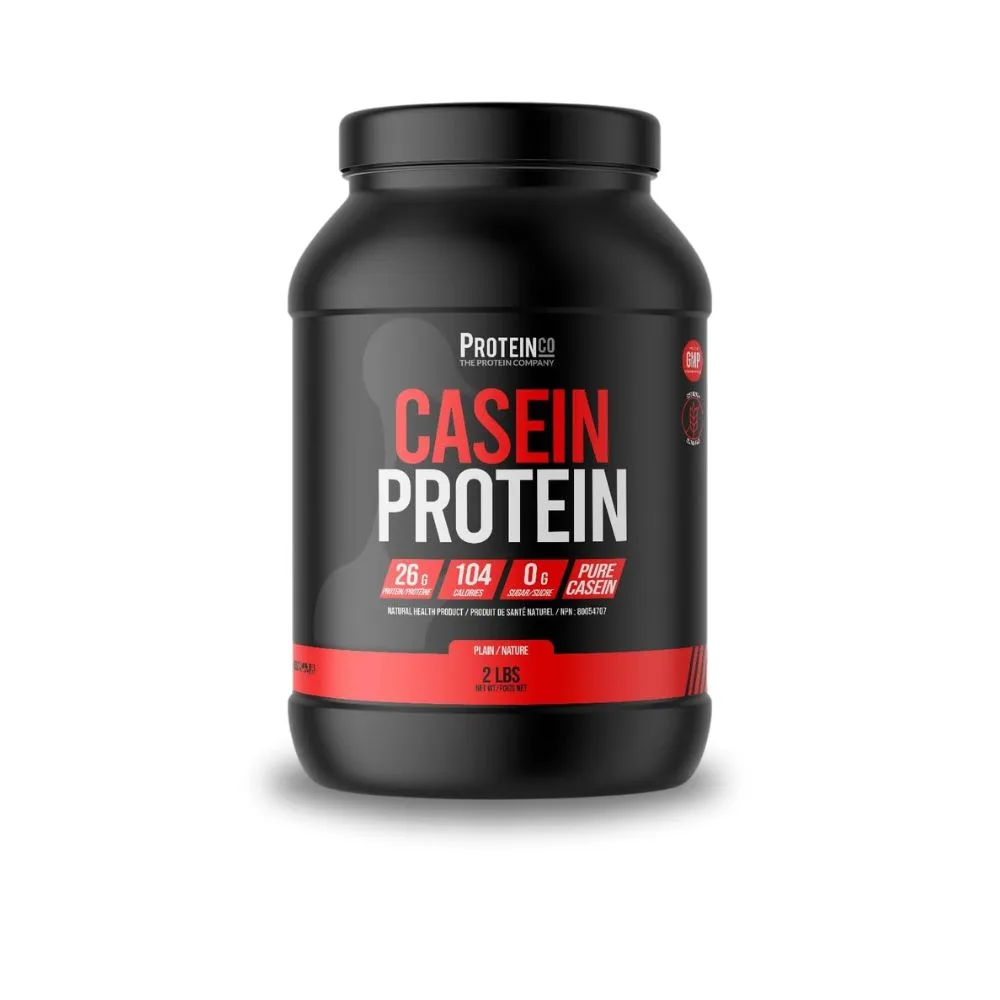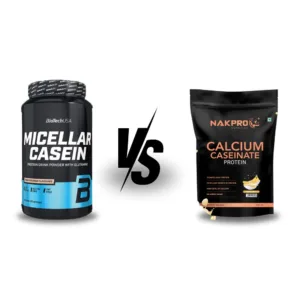In the world of protein supplements, whey protein often steals the spotlight with its fast-absorbing properties. But there’s another milk-derived protein that deserves equal attention, especially for its unique ability to provide a sustained release of amino acids i.e casein protein.
This guide dives deep into the science of casein, exploring its distinct properties, the differences between micellar casein and calcium caseinate, and the benefits of its slow-digesting nature for muscle recovery, growth, and even weight management.
Whether you’re an athlete, a fitness enthusiast, or simply someone looking to optimize their protein intake, understanding casein can be a game-changer for your health and fitness journey.
Table of Contents
- What is Casein Protein and How is it Different from Whey?
- Micellar Casein vs. Calcium Caseinate: Understanding the Two Main Forms
- Micellar Casein vs. Calcium Caseinate: Which One is Right for You?
- The Science of Slow Digestion: Why Casein’s Unique Property Matters
- Casein Protein for Muscle Recovery and Growth: Overnight Muscle Support
- Research Supporting Casein for Muscle Growth
- Casein Protein for Weight Management: Satiety and Potential Metabolic Benefits
- Other Potential Benefits of Casein Protein:
- Potential Drawbacks and Considerations:
- How to Use Casein Protein:
- Conclusion:
What is Casein Protein and How is it Different from Whey?
Both casein and whey are proteins found in milk, but they differ significantly in their structure and how they behave in the body. While whey is the liquid portion that separates during cheesemaking, casein is the main component of the curds.

Micellar Casein vs. Calcium Caseinate: Understanding the Two Main Forms
When you start exploring casein protein supplements, you’ll likely encounter two primary forms: micellar casein and calcium caseinate. Understanding their distinctions is important for making an informed choice.

Micellar Casein: The Natural, Slow-Digesting Champion
-
-
- Prolonged Amino Acid Release: Ideal for providing a steady supply of amino acids to muscles, particularly during periods of fasting, such as overnight.
- Anti-Catabolic Effects: Helps minimize muscle protein breakdown, making it beneficial for preserving muscle mass.
- Enhanced Satiety: Its slow digestion can promote a feeling of fullness, potentially aiding in weight management.
-
Calcium Caseinate: A More Processed, Less Expensive Option
-
- More Affordable: Calcium caseinate is generally less expensive than micellar casein.
- Mixes More Easily: Its higher solubility makes it easier to mix into liquids.
-
-
- Faster Digestion: Doesn’t provide the same prolonged amino acid release as micellar casein.
- May Not Be as Effective for Overnight Use: Due to the faster digestion.
- Potentially Less Bioactive Compounds: The acid treatment might reduce the content of some beneficial bioactive compounds found in casein.
-
Micellar Casein vs. Calcium Caseinate: Which One is Right for You?
Choose Micellar Casein if:
Choose Calcium Caseinate if:
The Science of Slow Digestion: Why Casein’s Unique Property Matters
Casein’s defining characteristic is its slow digestion rate. This unique property stems from its behavior in the acidic environment of the stomach.
Casein Protein for Muscle Recovery and Growth: Overnight Muscle Support
The slow-digesting nature of casein, particularly micellar casein, makes it an excellent choice for promoting muscle recovery and growth, especially during periods of fasting, such as overnight.
Minimizing Muscle Protein Breakdown (Catabolism)
Promoting Muscle Protein Synthesis (Anabolism)
Research Supporting Casein for Muscle Growth
Casein Protein for Weight Management: Satiety and Potential Metabolic Benefits
While often associated with muscle building, casein protein can also play a role in weight management.
Enhanced Satiety

Potential Metabolic Advantages
Using Casein for Weight Management:
Other Potential Benefits of Casein Protein:
Beyond muscle growth and weight management, casein may offer other potential health benefits:
Potential Drawbacks and Considerations:
How to Use Casein Protein:

Conclusion:
Casein protein, particularly micellar casein, offers a unique advantage in the world of protein supplements due to its slow-digesting nature.
This property makes it an excellent choice for promoting muscle recovery and growth, especially during overnight fasting, and it can also be a valuable tool for weight management by enhancing satiety.
While whey protein remains the go-to for rapid post-workout amino acid replenishment, casein provides a sustained release that can be highly beneficial for specific goals and situations.
By understanding the science behind casein and its different forms, you can make informed decisions about how to incorporate it into your diet and fitness routine to maximize its potential benefits.

Leave a Reply